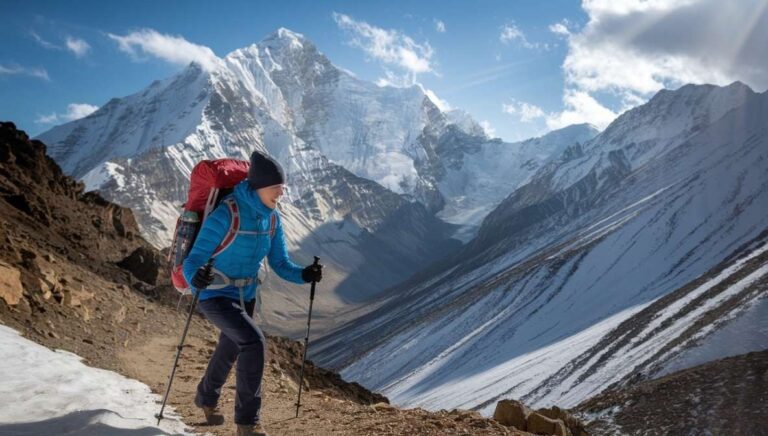
Hiking is more than just a leisurely walk through nature—it’s a thrilling adventure that tests your endurance, strength, and mental grit. Whether you’re dreaming of scaling towering mountains, tackling the iconic Grand Canyon, or preparing for a high-altitude journey, the right training can transform a daunting task into an exhilarating experience. This guide will help you learn how to train for hiking, step by step.
1. Building Endurance: The Foundation of Hiking
Endurance is at the heart of any hiking journey, especially for long or high-altitude treks. Training for endurance doesn’t just mean being able to walk for long periods; it involves preparing your entire body for sustained physical activity.
• Start with Regular Walks
Begin by adding daily walks to your routine, gradually increasing the distance and duration. Aim for 30-60 minutes of brisk walking to build a base level of cardiovascular fitness.
• Increase Incline
To mimic the conditions of mountain hiking, incorporate hills or stair climbing into your walks. This helps your muscles adapt to the kind of strain they’ll face on the trail.
• Weekend Hikes
Plan short hikes on weekends to get used to varied terrains. These will simulate the conditions you’ll face and help you gauge your progress.

2. Strength Training for Hiking
When learning how to train for mountain hiking or any rigorous trail, strength is essential. Hiking involves more than just your legs—it requires a strong core, back, and shoulders, especially if you’re carrying a backpack.
• Leg Workouts
Squats, lunges, and step-ups are fantastic for building the quadriceps, hamstrings, and glutes, which are crucial for uphill climbs.
• Core Strength
Planks and leg raises strengthen your core, ensuring better balance and reducing the risk of injury.
• Upper Body
If your hike involves carrying a pack, don’t forget about your upper body. Push-ups, rows, and shoulder presses will strengthen the muscles needed to support the extra load.
3. How to Train for High Altitude Hiking
High-altitude hiking comes with its unique challenges, including thinner air and reduced oxygen. To prepare, focus on these training steps:
• Cardiovascular Conditioning
Engage in high-intensity interval training (HIIT) sessions that push your cardiovascular limits. Short bursts of intense activity followed by brief recovery periods simulate the effort required for steep climbs at altitude.
• Simulate High Altitude
If you don’t live in a high-altitude area, training on inclined treadmills or with a weighted backpack helps mimic similar conditions. Some athletes even use altitude masks, but these should be used with caution and ideally under professional guidance.

• Practice High-Altitude Hikes
When you can, train by hiking at higher elevations before your main adventure. This allows your body to adjust to the thinner air and helps you learn to control your breathing and pace.
4. Mastering the Grand Canyon: A Unique Challenge
Training for hiking the Grand Canyon requires preparation for the unique demands of the trail—descending steep switchbacks and then climbing back up, all while dealing with potential heat and exhaustion.
• Downhill Training
Going down can be more taxing on the legs than going up, especially on the knees. Incorporate exercises like downhill lunges and controlled descents on stairs to strengthen your leg muscles.
• Heat Acclimatization
Depending on when you plan to hike, the Grand Canyon can be sweltering. Train in warmer conditions to help your body get used to managing heat while staying hydrated.
• Endurance Hikes
Longer hikes with elevation changes will prepare you for the rigorous demands of descending and ascending the Canyon.

5. Preparing Mentally and Logistically
A successful hike isn’t just about physical readiness. Mental preparation and logistical planning are just as crucial.
• Mind Over Matter
Hiking can push you to your mental limits. Train your mind by practicing mindfulness, setting small goals on your hikes, and celebrating those milestones. Visualize yourself completing the hike, focusing on positive outcomes.
• Hydration and Nutrition
Practice carrying enough water and snacks on your training hikes. Your body will need hydration and fuel to keep up its energy levels during longer hikes.
• Gear Familiarity
Train with the gear you’ll use, including your backpack, boots, and any trekking poles. This ensures you’re comfortable and minimizes surprises on the trail.
6. Training Tips for Altitude Hiking
Altitude hikes, especially those over 8,000 feet, come with the risk of altitude sickness. Here’s To get yourself prepared for altitude hiking, follow these steps:
• Pace Yourself
One of the biggest mistakes hikers make is going too fast too soon. Training to maintain a steady, moderate pace is essential for altitude hikes where energy conservation is key.
• Breathing Techniques
Practice deep breathing exercises. Learning how to take full, steady breaths can help maximize oxygen intake when it’s limited.

• Strengthen Your Cardiovascular System
Activities like cycling, swimming, and running are excellent for building lung capacity and improving oxygen efficiency.
7. Tips for Training Success
Consistency and gradual progress are your greatest allies when training for hiking. Here are a few final tips:
• Create a Schedule
Set a training schedule that allows you to gradually increase your activity level over weeks or months.
• Pay Attention to Your Body
Pushing too hard can result in injuries. If you feel pain that goes beyond typical muscle soreness, make sure to take a break and rest.
• Join a Group
Training with friends or joining a local hiking group can keep you motivated and accountable.
• Celebrate Small Wins
Each step in your training journey is an achievement. Whether it’s a longer weekend hike or climbing a steeper hill, these moments prepare you for the main event.
Conclusion: Embrace the Journey
Training for hiking, whether it’s for mountain trails, the Grand Canyon, or high-altitude peaks, is an enriching experience that enhances your fitness and builds resilience. By following these guidelines, focusing on both physical and mental preparation, and training consistently, you’ll be ready to conquer your chosen trail with confidence.
So lace up those hiking boots, pack your gear, and get ready to transform each training session into a step toward your hiking dream. The mountains, trails, and panoramic views await!
FAQs about Train for Hiking
Start with cardio workouts and practice hiking at a higher elevation if possible. Deep breathing exercises and HIIT workouts also help prepare for the oxygen challenges of high-altitude trails.
Aim to start training at least 8-12 weeks before your planned hike, especially if it involves steep inclines or high altitudes.
Acclimate gradually by hiking at higher altitudes before your main hike. Stay hydrated, avoid alcohol before your trip, and listen to your body for any warning signs of altitude sickness.
Carry water, snacks, a first aid kit, and any equipment you plan to take on the actual hike to get used to the weight.
Leg exercises like lunges and step-ups, core workouts like planks, and upper body training such as shoulder presses and rows are most effective.
